After making the Pomodoro sauce, you might want to make fresh pasta to go with it. This recipe is for Italian egg pasta and Chinese egg noodles. The different between the two is only one ingredient, the baking soda. Most Asian wheat noodles will contain some form of alkaline;baking soda is one simple alkaline that I use. There are many different kinds of alkaline used in noodles. The Japanese noodles use Kansui, which is alkaline natural water. Alkaline helps relax the gluten in the dough, so you can stretch the dough longer and thinner.
I use the KitchenAid attachment to roll the dough. You are not limited to using the same tool. You can use the hand crank pasta maker or even a rolling pin but my method explained here will be based on using the KitchenAid attachment. I LOVE this tool. I was using the Italian hand crank pasta roller before. It’s pretty good but takes extra time.
Ingredients
Flour 1 cup 160g for bread flour or 130g for all-purpose (I use all-purpose but you can mix it with whole wheat or you can use bread flour. I found that bread flour, which contains more protein, is the best for Asian noodles but all-purpose is better for pasta.)
2 eggs
salt 1/2 tsp
Only for Chinese-style egg noodles, add baking soda 1/4 tsp
Method
Mix the eggs and flour in a power mixing bowl using a dough hook.
Scrape the side of the bowl during the mixing to incorporate all the flour.
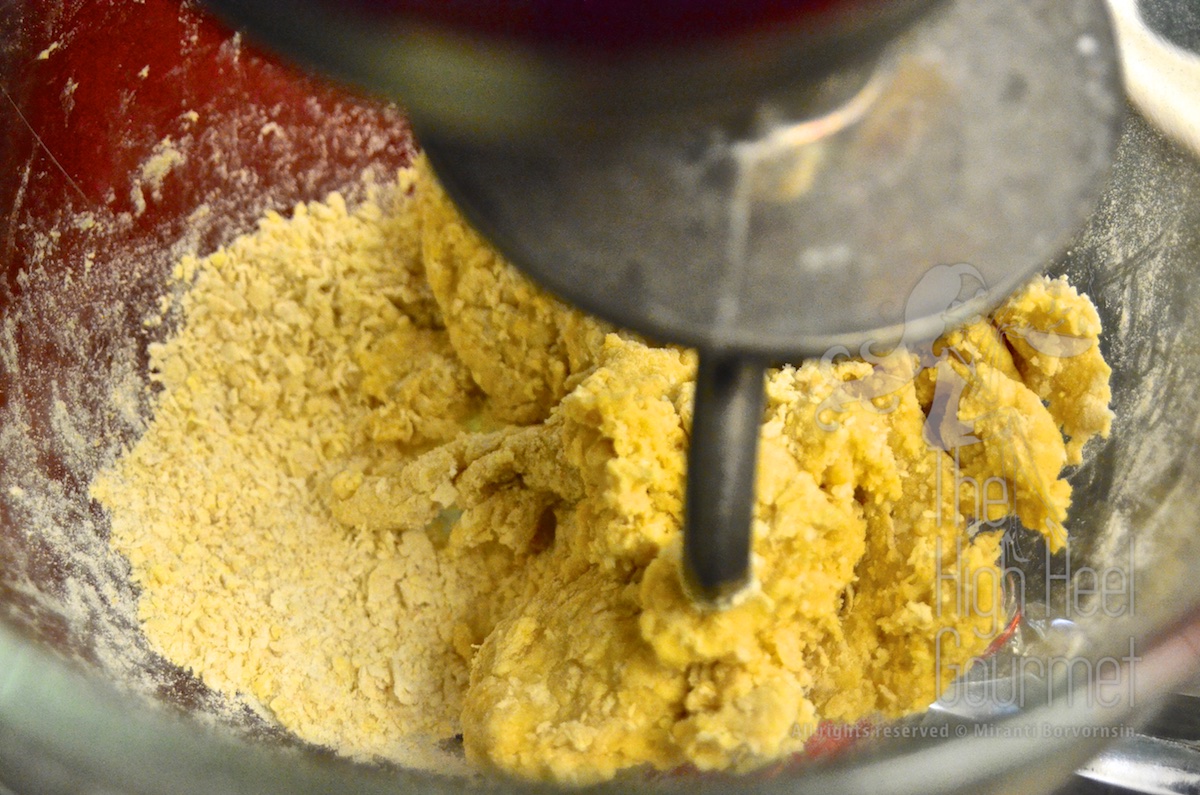
This isn’t too dry yet…keep mixing but after you scraped the bowl and ran the hook for a while and it still doesn’t combine then add one tsp of water or oil at a time. I didn’t need it here.
Mix until it forms a single lump, then stop the machine. Touch to see if it sticks to your finger. If it does, then add more flour while you knead. If it doesn’t turn into one lump, then you need to add water or oil one tsp at a time until it forms.
For Italian style pasta: Knead the dough by hand for two more minutes.
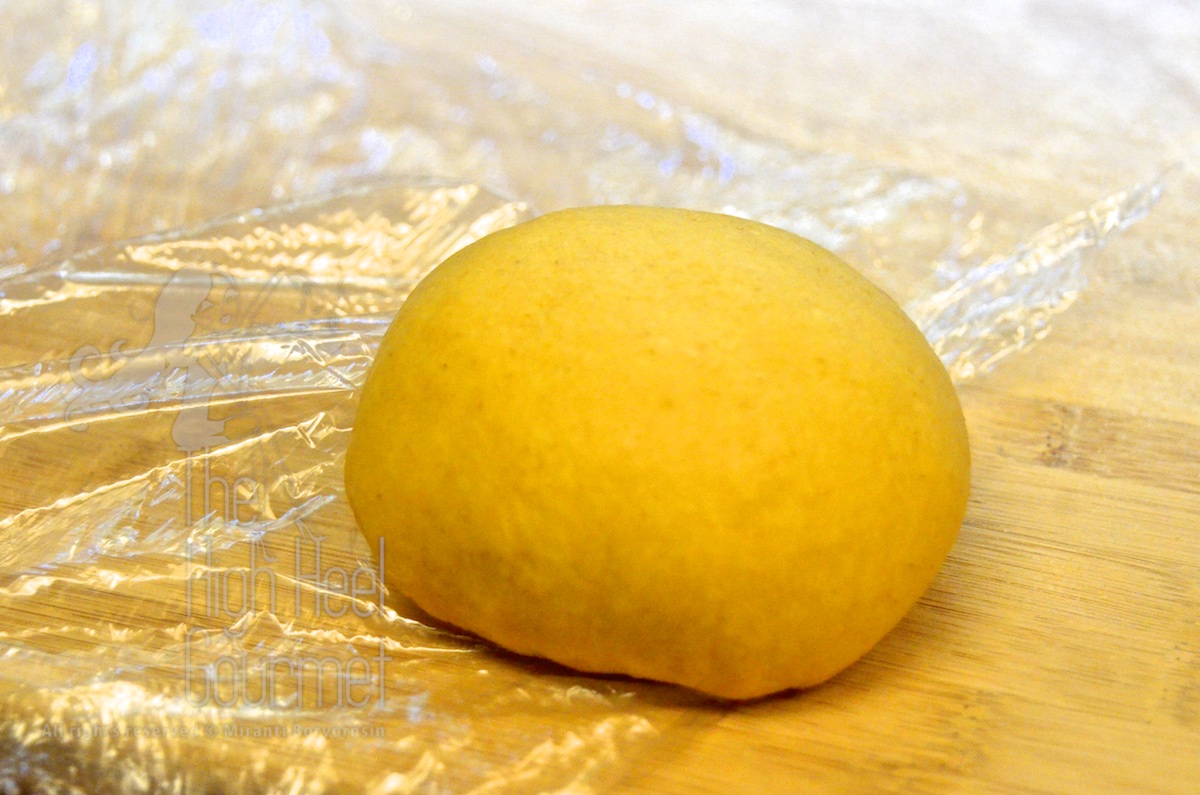
This is the finished dough after I kneaded it by hand, ready to be wrapped and rest for the gluten to form.
After you done with kneading, wrap the dough in plastic wrap of parchment paper and rest the dough for at least half an hour.
For Chinese egg noodles:We need more gluten to develop, that’s why we add the alkaline (baking soda) to help relax the gluten and make it easier to roll and even stretch. So either continue with the dough hook at medium speed, or kneading by hand for another 10 minutes until the dough is smooth in texture. Then rest it for a longer period, more than 2 hours.
After the resting period, attach the pasta attachment, divide the dough into 2 portions, then roll the dough in flour and flatten it a little bit.
For Italian egg pasta: set the pasta roller setting at #1 and roll it out one step at a time–do not skip the stages of thickness.
I normally stop at #4 for regular thick pasta, like pappardelle, stringozzi, bavette (you can’t cut bavette using the attachment, but a chitarra would do the job); stop at #5 for linguini, fettucini, and lasagne, #6 for a thinner pasta like tagliatelle, and go all the way to #7 for tajarin or taglierini and pillus.
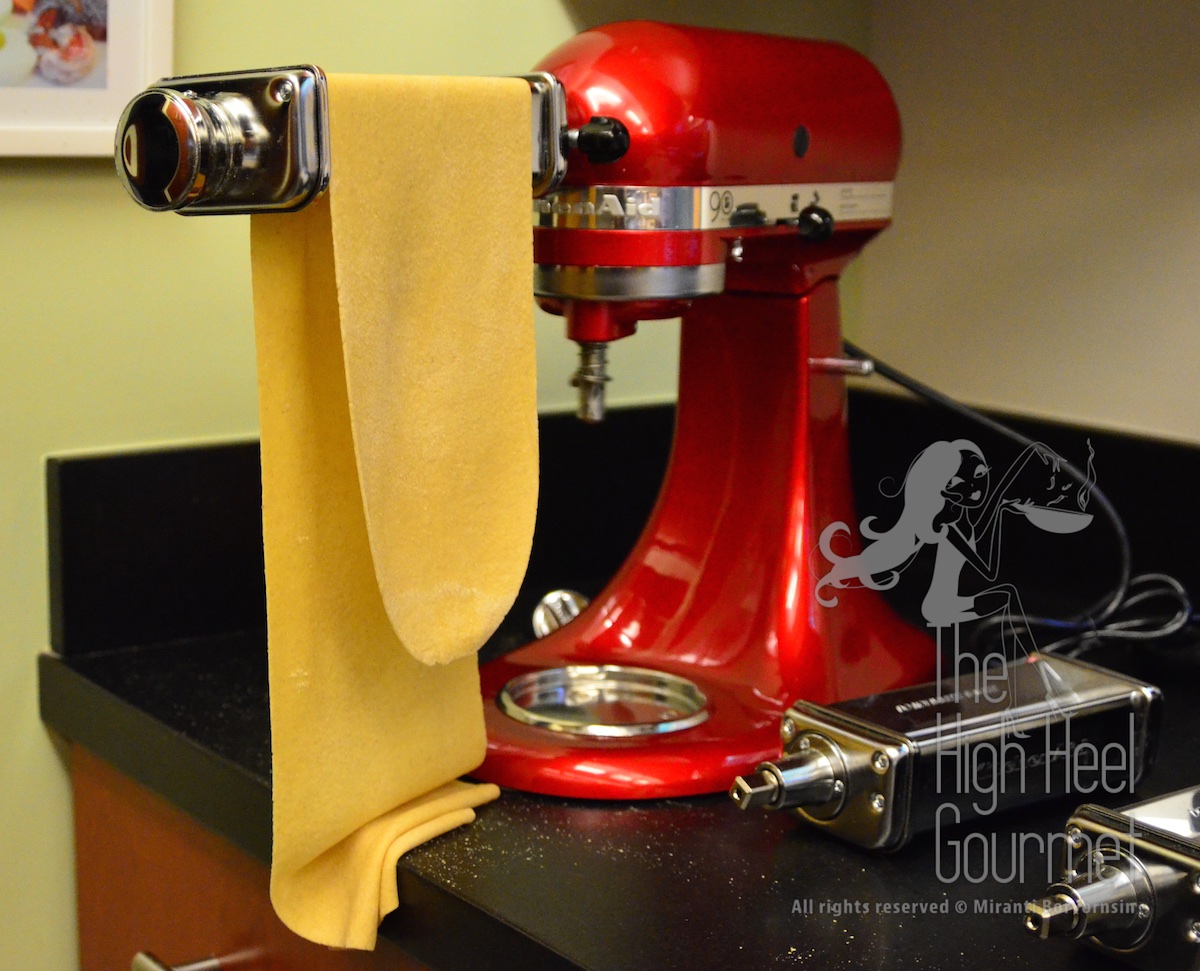
This is #5 setting on the roller from the same dough. The dough stretches longer and longer as the setting number gets higher.
For Chinese noodles: Set the pasta rolling at #1 and continue rolling it step by step all the way to #4 for round noodles (if using the attachment to cut the noodles, it will come out like spaghetti alla chitarra that’s rather more square than round) and to #7 for thick flat noodles. I rolled all the way through #8 for this thin flat egg noodle.
Important: DRY THE PASTA SHEETS 5-10 MINUTES BEFORE YOU CUT THEM, because you can’t really cut the wet sheet. You’ll only make a mark on the dough and you’ll have to separate them by hand…no fun at all! And no, you don’t need to hang it there on the machine. I use my dishwasher handle to dry the sheet, haha…
After drying, change the attachment from rolling to cutting. I’m using the fettucini cutter for this one.
You don’t have to keep the sheet this long if you make Italian pasta but for Chinese noodles I love it long (for good luck).
If you want to do other types of flavored pasta such as spinach, tomato, carrot, pumpkin, etc., substitute the egg with 1/4 cup of vegetable puree for every 100 g of flour, but remember to check the dough to see if it is too wet or too dry. Black squid ink pasta only needs about 1 tbsp of squid ink mixed with 1-2 tbsp of water for 100g of flour.
And now you’ve got fresh pasta to eat with your homemade sauce. It’s so easy, isn’t it? I don’t buy fresh pasta from the market anymore after I bought these attachments. Nothing beats homemade!

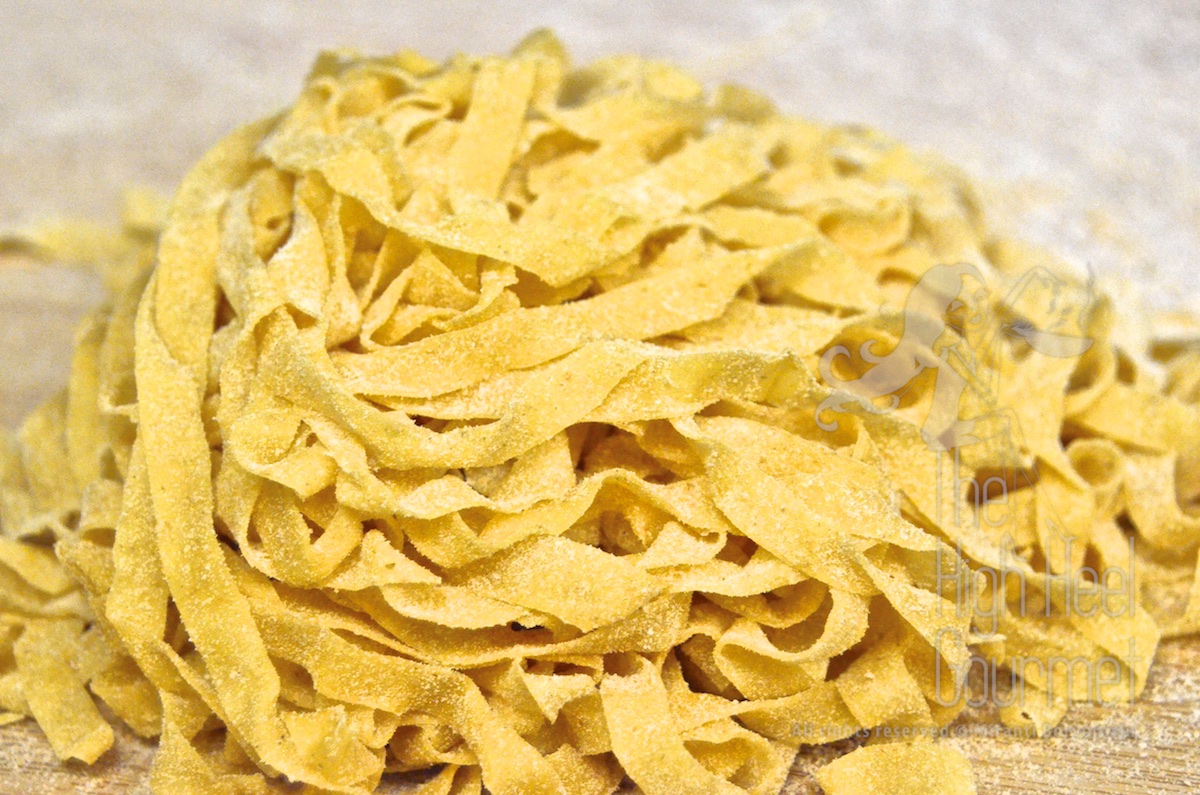
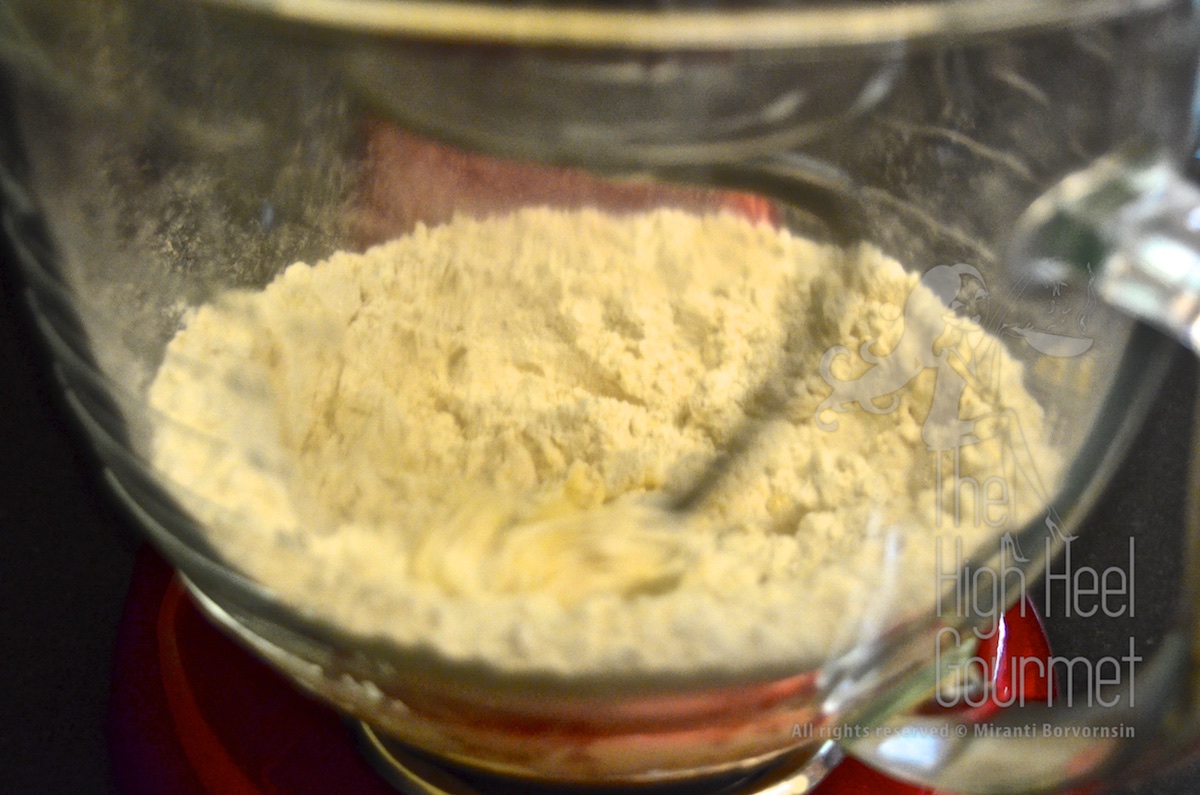
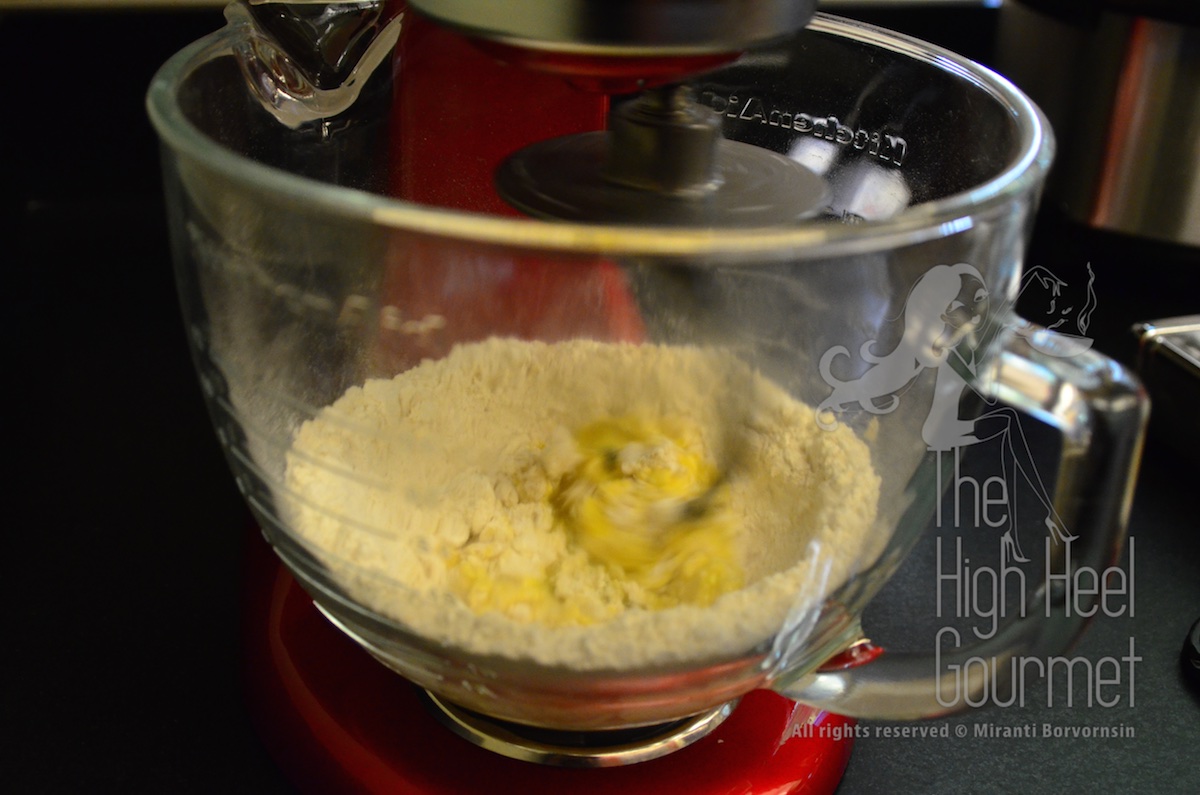
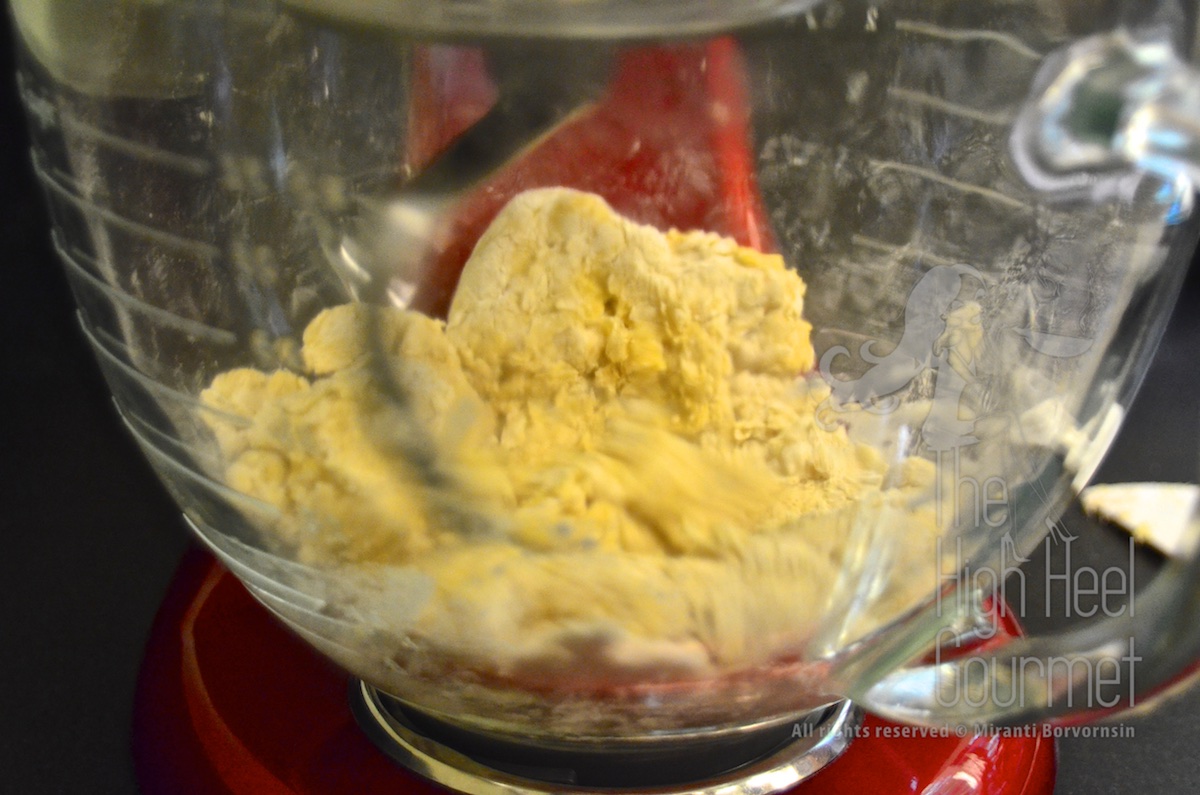
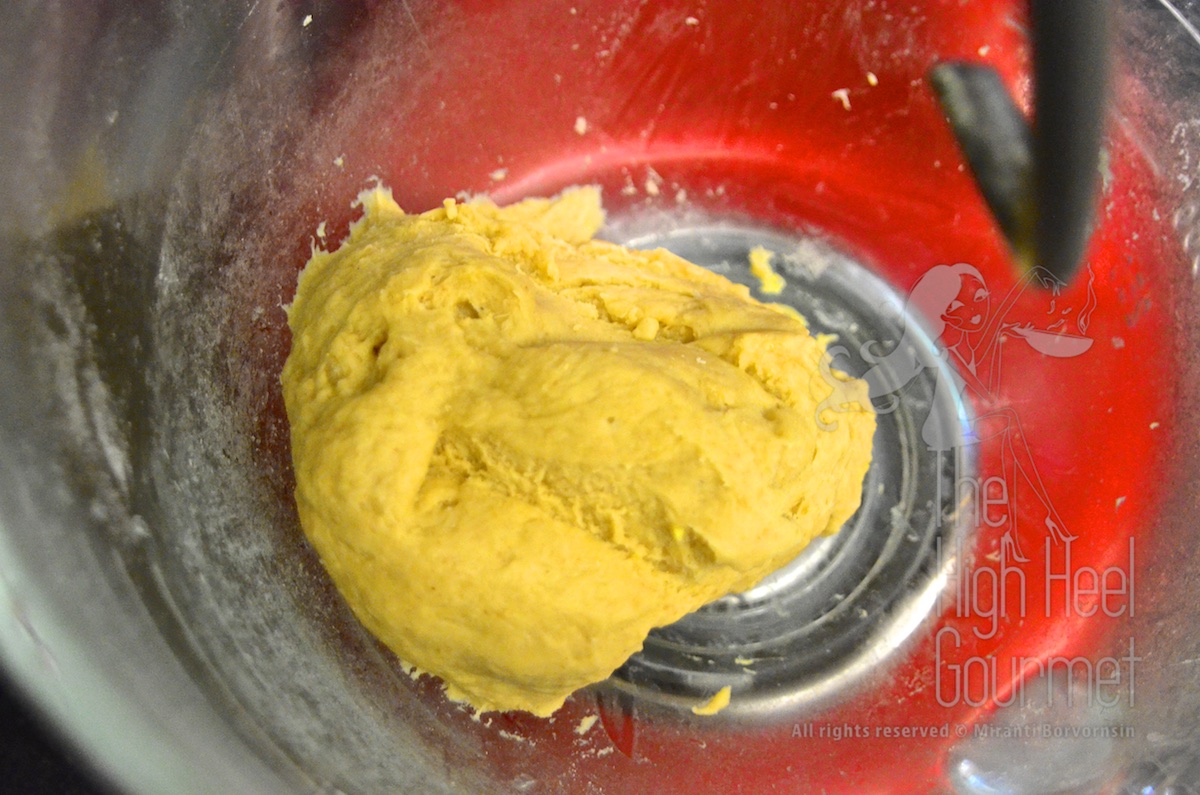
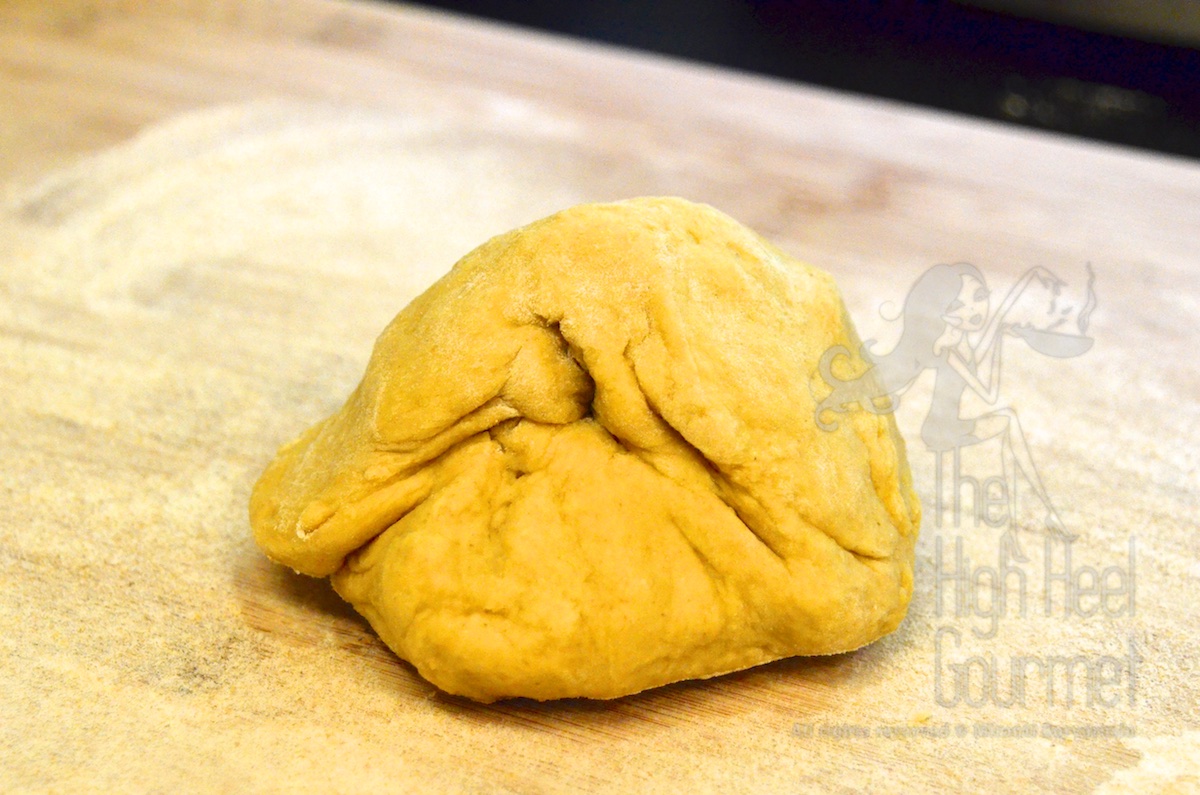
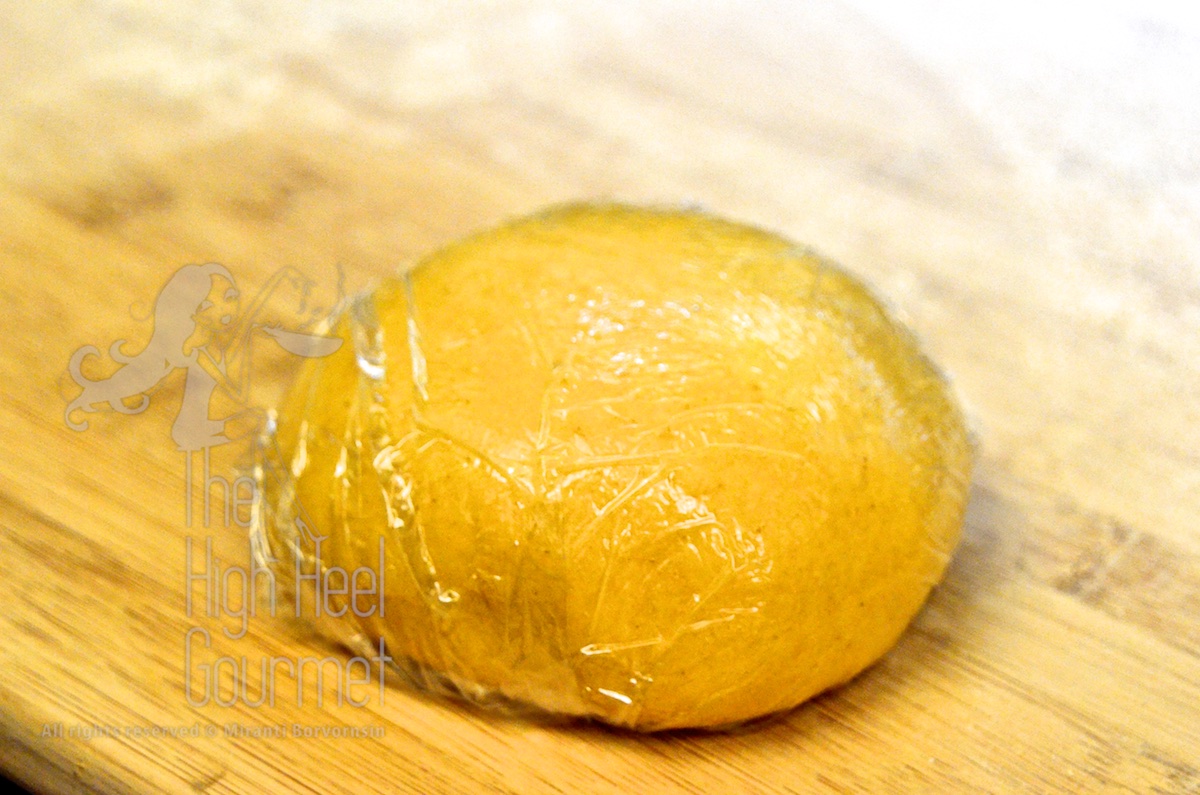
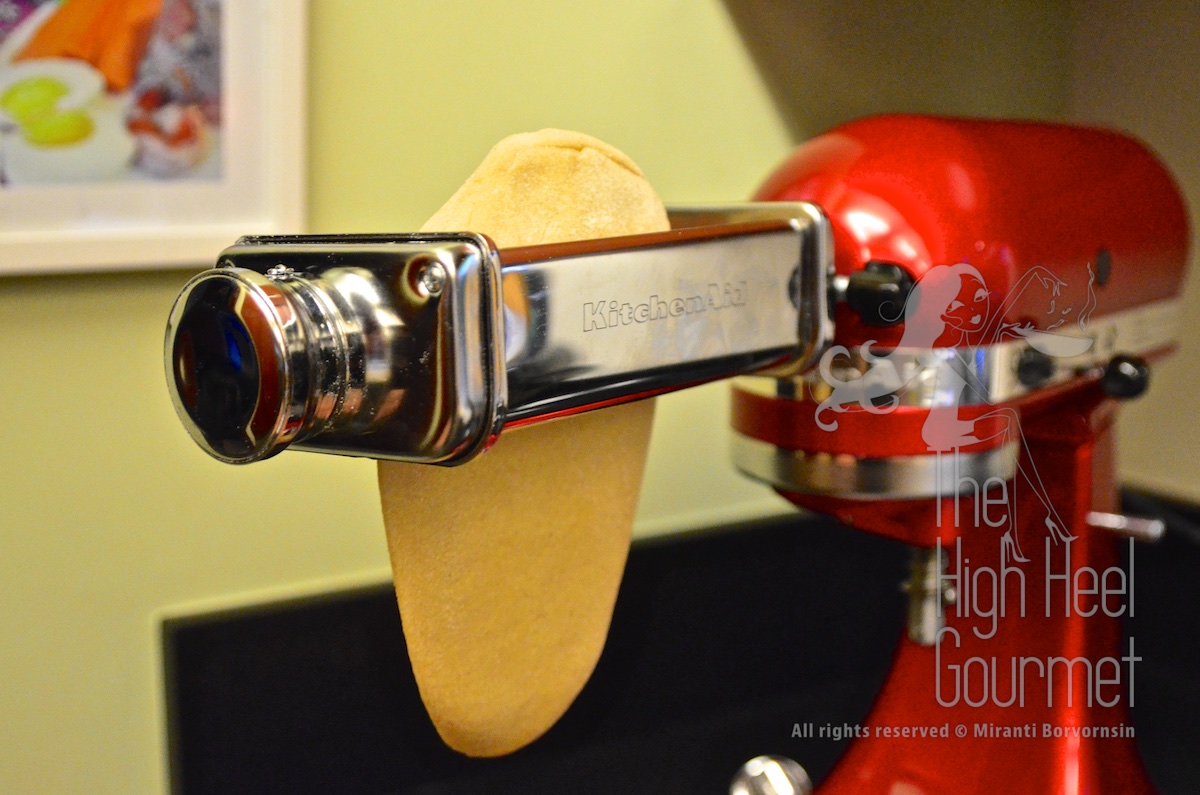
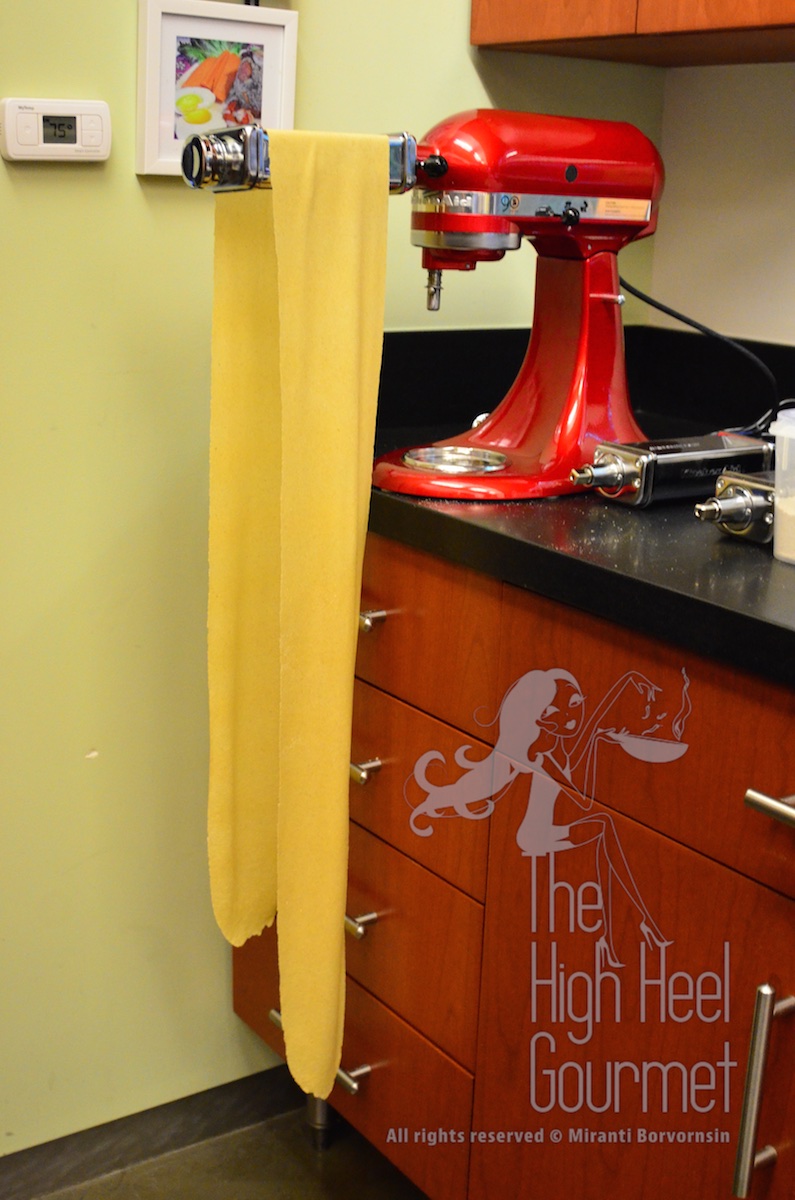
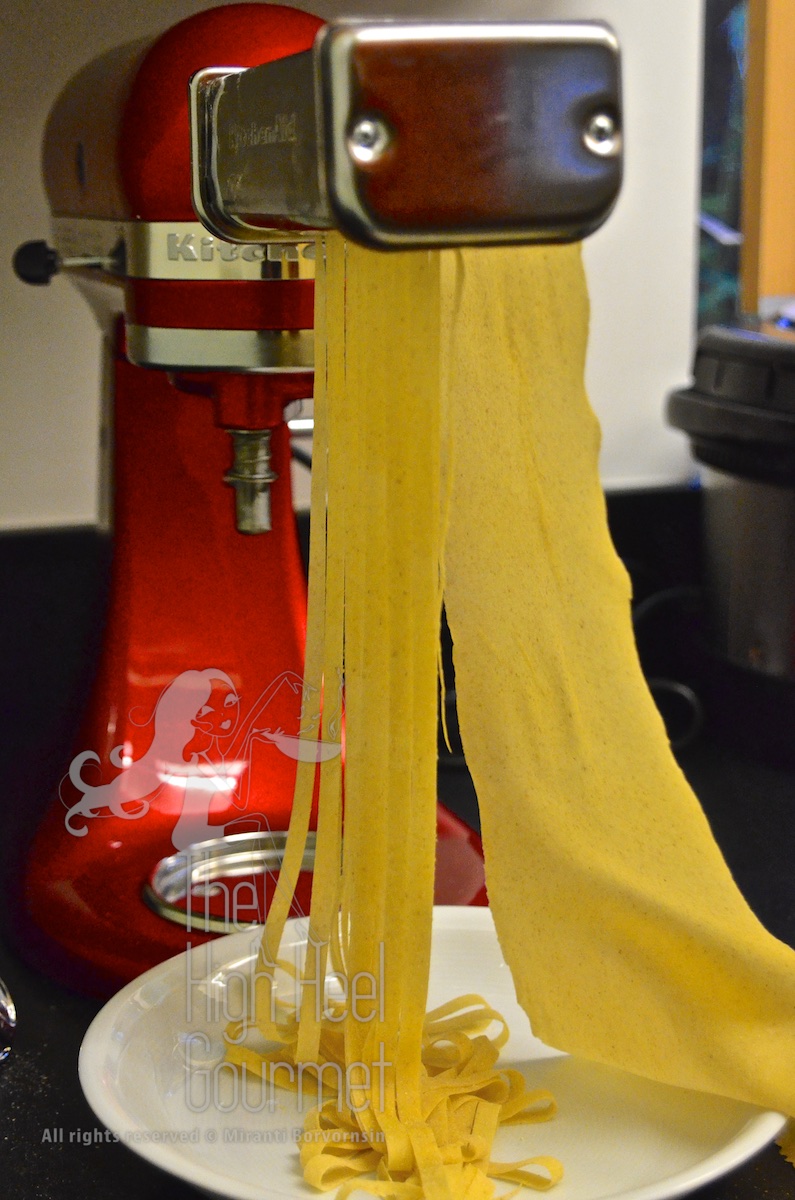
Good job they look great!
Wow, look at you! Awesome
This is so soooo cool! My Grandma was Italian and I’ve never made my own pasta. Can you believe it? Thanks for sharing!!
Have you tried it yet? I just visited your blog, lovely!
Thanks for the compliment. Today: French onion soup (if I don’t mess it up:0))
Thank you for posting the chinese noodle recipe. I’ve been making the chinese noodle for the past 2 weeks. My family loveeees them so much. Thank you! Thank you!
Have you tried to make spinach noodles? Do you mind share the recipe. On the above article you said 1/4 of puree subtitute the egg for every 100 g. My questions is do you use still use egg in the recipe? Do you use frozen spinach or fresh spinach for the puree? Do need to add water? Thank you for your help!
In this post I forgot to mention that the Chinese noodle would have a better texture if you “ripe” them in the fridge for two days. So the gluten would develop more and with the alkaline that relax them, you will get crunchy noodles. The fresh one are good but softer.
Now back to spinach noodles if you make a lot you can use both spinach and egg. For a smaller portion if you want to put egg, there will be egg left over.
The spinach I used is either cooked spinach and drain the water out as much as possible, or frozen spinach (great for quick dinner). I chopped and push them through the sieve to get a finer purée. If you make a lot you can use the food processor to purée them.
To tell you the truth that I don’t usually measure anything when I cook 🙁 my bad habit learnt from Thai cooking. I only measure when I develop recipe for someone else. So with the vegetable pasta, I just “feel” the wetness of the dough to determined if the dough need more water or more flour. You have been working with the dough so remember the feel of the egg dough and try to mimic it. The spinach I used come with different wetness. So I can’t really measure anyway but try your best to squeeze the water out would help the color and intensity of the dough. Add water or egg or oil if the dough too dry, add more flour if the dough too wet and rest for longer period. I rest for one hour because the spinach would prevent the gluten to form and without good gluten its harder to roll the dough in to a sheet. Also dry them longer before cutting. Remember the spinach fiber would hold the moisture longer. Touch the egg pasta sheet to see the readiness and compare them with the spinach. I usually recommend making spinach AND egg pasta both for the first time making spinach pasta. So you have a reference point.
If you want to make spinach Chinese pasta, (it came out greener because of baking soda!) do it in three steps. I found this by accident. Instead of trying to make the smooth dough before the rest, just rest the dough for an hour, then come back to kneed until it smooth, it took only half of the time, with in five minutes or less you will get smooth dough with our using your strength that much. Then rest it for another three hour before rolling.
Thank you for your reply. I already made the spinach noodle. It turned out sooo good! Thank you so much for the advice!
Your welcome! Now it’s time to try a two tone noodles 😉
Hi Miranti,
Thank you so much for sharing your recipes. I made your Chinese eggs noodles a few nights ago. I haven’t eaten them yet as they’re “ripening” in my fridge as we speak. I can’t wait to make the Bahmee moo dang tomorrow! I do have a question regarding the dough. Why did it turn a greenish color on the outside but still yellow on the inside? It’s still edible right? Thank you so much for any advice on how to avoid it next time.
What type of flour (brand) are you using?
It sounded like the alkaline is not enough in the doug. Next time try baking the baking soda in the oven (200F 1 hr) then mix the 1/8 tsp with the product and omit the egg. (You will get the yellow looking noodles without eggs)
I remember having that problem before and it could be that the temperature in your fridge is higher than usual. Refrigerator should be between 2-4C or 35-39F.
Please let me know your result.